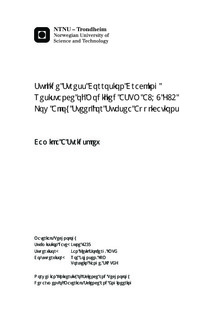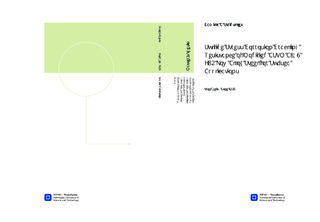| dc.description.abstract | The resistance to sulfide stress corrosion cracking (SSC) of modified ASTM A694 F60 low alloy steel, produced by two different manufacturers, was studied by four-point bend-testing. The two materials are named material A and material B in this report. Both materials were tested in two different environments with different severity, one ?sweet-transition region? test and one ?sour service? test. The test conditions were controlled by the H2S partial pressure (pH2S) and pH. These parameters were varied in the two tests. Resistance to SSC was investigated on the base materials and on the thermal weld-simulated and notched materials. The thermal weld simulation was performed to provide the intercritically reheated CGHAZ, leading to a microstructure containing hard constituents. The tests were performed in autoclaves at room temperature with a pressure of 10 bars.The microstructure and Vickers hardness (HV) of both base materials and the heat affected zones were studied as these parameters affect the SSC susceptibility. The hardness of material B is higher than for material A and are respectively 249±2 HV and 214±5 HV. The hardness of the heat affected zone of the two materials are similar, both peaking at the center at about 400 HV. The microstructure of base material A mainly consists of bainite and ferrite/pearlite while material B mainly consists of acicular ferrite and bainite. The microstructure of the intercritically reheated CGHAZ is characterized by bainite laths among large prior austenite grain boundaries. At the grain boundaries, M-A constituents have crown in a ?necklace? formation.The base materials did not reveal cracking in the sweet-transition test, however, localized corrosion caused by CO2 and H2S was found along the stressed side of the specimen. Base material B was more severely attacked than material A, based on the length and density of the corrosion pits. In the ?sour service? test, severe general and localized corrosion and cracking was observed in both base materials. The materials are therefore considered unsuitable for ?sour service? applications. In the HAZ specimens, of both material A and B, severe cracking was observed in both tests. The specimens were fully separated by cracking in the ?sour service? test. The welded materials are therefore considered highly susceptible to SSC when a notch exists in the intercritically reheated CGHAZ. The HAZ hardness is higher than the maximum hardness requirement for SSC resistance at 248 HV. It would therefore be beneficial to perform additional testing of the HAZ, with a hardness level within the requirements.The cracking appeared as transgranular and was often initiated at the prior austenite grain boundaries, near the M-A constituents in the HAZ. | nb_NO |

